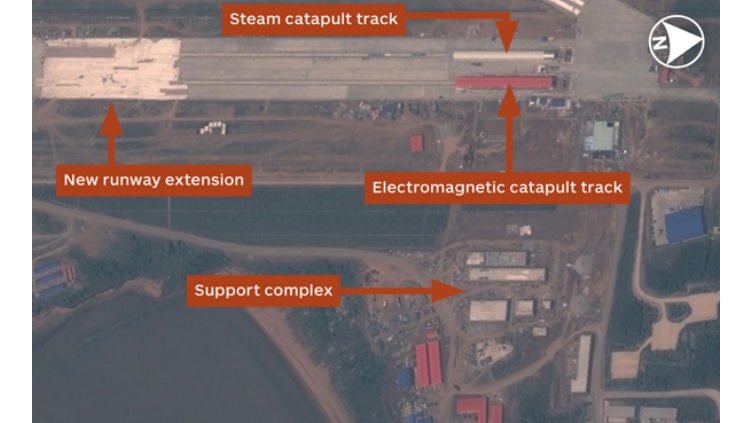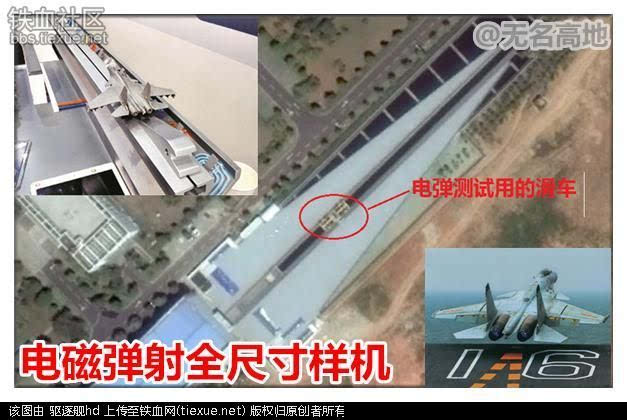WolfPack86
New Member
- Joined
- Oct 20, 2015
- Messages
- 10,571
- Likes
- 16,993
Indian Navy needs atleast 50 coventional submarines and 25 Nuclear attack submarines and 18 ballistic missile submarines. And also 250 naval multi role helicopters.
Another MMRCA. Sometimes I think our defence has been compromised by these trojan horses.Indian Navy unlikely to have more than 2 Aircraft Carrier fleet in the next 15 years
Notwithstanding the uncertain security scenario on the borders, the Indian Navy is not likely to expand its existing fleet of one aircraft carrier over the next 15 years.
This is because the Defence Procurement Board has reportedly decided to put India’s indigenous aircraft carrier 2 (IAC) plan on the back burner, according to sources.
The IAC-2 is not part of the 2017-19 annual acquisition plans of the Indian Navy.
“A three-member committee that was formed by former defence minister Manohar Parrikar for formulating specifications, costing and aircraft for the carrier has now been disbanded,” a highly placed source told FE.
While IAC-2 has been put on hold as of now, IAC-1 is expected to be rolled out only by 2023. “The Indian Navy’s first indigenous aircraft carrier INS Vikrant is scheduled to roll out from the Cochin Shipyard by 2021-23, almost eight years late.
This leaves the Navy with one operational aircraft carrier INS Vikramaditya, the 45,000-tonne carrier bought from Russia, which is due for repairs soon,” the source said.
Earlier this year, Indian Navy’s Vice-Admiral D M Deshpande, controller of Warship Production and Acquisition, talking at Ficci’s international seminar on ‘Building India’s Future Navy: Technology Imperatives’, had indicated that the defence ministry remains uncertain about spending billions of dollars on a carrier. According to him, “an aircraft carrier is a huge ticket item and, before some commitments are made on allocation of these funds everybody wants to be very clear on the requirement, whether we actually need that. So these are being addressed before we actually take it up to the government for final clearances.”
According to reports, navies like the US Navy, the Royal Navy, the French, Russian and now even the Chinese PLA-N have all built their fleets around aircraft carriers, which enables them to project their power over long-distance from their home bases.
The PLA-N operates only its first-ever carrier, the 65,000-tonne Liaoning, which Beijing bought from Russia, refurbished, and commissioned in 2012. India has operated at least one aircraft carrier ever since INS Vikrant joined the fleet in 1961.
The PLA-N, however, now plans to commission and operate at least 5-6 carriers.
http://defencenews.in/article.aspx?id=263297
We will have a true blue watwr navy with these beasts.....Looks like the Navy might go with a conventionally powered CATOBAR design for IAC-2
Vice Admiral D.M. Deshpande, Controller of Warship Production & Acquisition commented on the Indigenous Aircraft Carrier 2 (IAC-2) and Next Generation Destroyer (NDG) during the International Seminar on ‘Building India’s Future Navy: Technology Imperatives’, jointly organised by the Indian Navy and FICCI in New Delhi.
He clarified that both IAC-2 and NDG are at infancy stages, awaiting Approval-in-Principle from the Government of India. He shared the design vision for these two prestigious projects.
Displacement of IAC-2 will be of 65,000-tonne, with conventional propulsion system to clock maximum speed of 30 knots, have an air wing of 50-60 fixed wing and rotary wing aircraft and CATOBAR for its operations. Likewise, NDG will be of 13,000-tonne displacement with conventional propulsion system.
https://www.facebook.com/pg/TejasMrca/photos/?ref=page_internal
I think IAC 2 will be nuclear power but you said it will be conventional powered any source or link?Looks like the Navy might go with a conventionally powered CATOBAR design for IAC-2
Vice Admiral D.M. Deshpande, Controller of Warship Production & Acquisition commented on the Indigenous Aircraft Carrier 2 (IAC-2) and Next Generation Destroyer (NDG) during the International Seminar on ‘Building India’s Future Navy: Technology Imperatives’, jointly organised by the Indian Navy and FICCI in New Delhi.
He clarified that both IAC-2 and NDG are at infancy stages, awaiting Approval-in-Principle from the Government of India. He shared the design vision for these two prestigious projects.
Displacement of IAC-2 will be of 65,000-tonne, with conventional propulsion system to clock maximum speed of 30 knots, have an air wing of 50-60 fixed wing and rotary wing aircraft and CATOBAR for its operations. Likewise, NDG will be of 13,000-tonne displacement with conventional propulsion system.
https://www.facebook.com/pg/TejasMrca/photos/?ref=page_internal
Conventional power is not really meaningful as it would mean unnecessary refuelling and heavy fuel expenditure. Also, if the conventional engine is imported MTU engine, it is another colossal blunder. It can be Kaveri Turbine too but as I said, they have unnecessarily high fuel expenditures and we have to rely of Arabs for the fuel.Looks like the Navy might go with a conventionally powered CATOBAR design for IAC-2
Vice Admiral D.M. Deshpande, Controller of Warship Production & Acquisition commented on the Indigenous Aircraft Carrier 2 (IAC-2) and Next Generation Destroyer (NDG) during the International Seminar on ‘Building India’s Future Navy: Technology Imperatives’, jointly organised by the Indian Navy and FICCI in New Delhi.
He clarified that both IAC-2 and NDG are at infancy stages, awaiting Approval-in-Principle from the Government of India. He shared the design vision for these two prestigious projects.
Displacement of IAC-2 will be of 65,000-tonne, with conventional propulsion system to clock maximum speed of 30 knots, have an air wing of 50-60 fixed wing and rotary wing aircraft and CATOBAR for its operations. Likewise, NDG will be of 13,000-tonne displacement with conventional propulsion system.
https://www.facebook.com/pg/TejasMrca/photos/?ref=page_internal
never trust US until the thing is in our hands.......US has a habit of changing rules in middle.US to Provide EMALS Technology to India for Aircraft Carriers
This gesture ahead of Secretary of State Rex Tillerson's visit to India is another indication of the strategic alliance US wants to foster with India, informed sources said.
PTI
Updated: October 18, 2017, 3:26 PM IST
Washington: The US will provide the crucial Electromagnetic Aircraft Launch System (EMALS) for the Indian Navy's future aircraft carrier, the Trump administration has informed India.
This gesture ahead of Secretary of State Rex Tillerson's visit to India is another indication of the strategic alliance the US wants to foster with India, informed sources said.
A formal date for Tillerson's visit has not been announced yet.
India had sent a letter of request to the US government during the Obama administration for the Electromagnetic Launch System (EMLAS) built by General Atomics for aircraft carrier planned by the Indian Navy.
The Indian Navy plans to integrate the US-made EMALS catapults into its future supercarriers.
Due to its flexible architecture, EMALS can launch a wide variety of aircraft weights and can be used on a variety of platforms with differing catapult configurations.
The Trump administration sent a response to India on Monday about its decision to release this technology.
Aerospace expert Dr Vivek Lall, chief executive, US and International Strategic Development, of General Atomics, had told PTI earlier that General Atomics is planning to open an office in Delhi to support the Indian government's military requirements.
Last month, Defence Secretary Jim Mattis visited India and decided to step up military-to-military cooperation.
The latest move comes after an endorsement by the Trump administration of the designation of India as a major defence partner by the previous Obama administration last year.
First Published: October 18, 2017, 3:10 PM IST
Link: http://www.news18.com/news/world/us...y-to-india-for-aircraft-carriers-1550359.html
Why not use multiple reactor then ? Enterprise run on 4 reactors , Nimitz on 2 probably ...3 ,190mw will do our jobBARC has successfully developed a 190 Megawatt (MW) reactor for India’s fleet of four-to-six nuclear propelled, nuclear missile carrying submarines, of which the first – INS Arihant – has already been commissioned. However, INS Vishal would require a reactor capable of generating at least 500-550 MW.
I guess it takes too much space. . .Why not use multiple reactor then ? Enterprise run on 4 reactors , Nimitz on 2 probably ...3 ,190mw will do our job
Enterprise used 8 reactors and it was the only one ever produced because of it's refueling cost.Why not use multiple reactor then ? Enterprise run on 4 reactors , Nimitz on 2 probably ...3 ,190mw will do our job
Why won't you(NAVY) do that when you are going to the sole customer of this reactor?Nor is such a 550 MW reactor in the development pipeline, because of a dispute over who will pay the bill. Says an indignant navy admiral: “BARC wants us to place a ‘developmental contract’ to fund the reactor’s development. Why should we do that?”
If so, then why Drop N-LCA MK-2 (citing lack of adequate thurst for carrier launch) which can not only notch up numbers(an asset) aboard carrier but also provide a stepping stone to designers and producers presently engaged with designing and later developing N-AMCA?EMALS features what its maker, General Atomics, calls a “dial-up-a-power-level”, allowing catapult power to be adjusted to launch aircraft of completely different sizes – from a light drone to a 60-tonne P-3C Orion maritime surveillance and anti-submarine aircraft. EMALS can launch many more aircraft per hour and is easier to maintain


Apne ghar ke paise nikal rahe ho kya? Much of the fund is sent back to govt every year, idiots don't want to get things done, jaichands everywhere.Nor is such a 550 MW reactor in the development pipeline, because of a dispute over who will pay the bill. Says an indignant navy admiral: “BARC wants us to place a ‘developmental contract’ to fund the reactor’s development. Why should we do that?”
I always wondered, is it something that can be sub-contracted to Japanese firms ? A better way of solidifying a Japanese-Indian partnership than spending $1 billion for a few seaplanes.EMLS is just one piece of technology which can be developed outside of USA just like Chinese are doing. But it seems like it is one hell of tech. greater in complexity than sending a probe to Mars that we are ready to kill everything else for it.
Japanese don't want to share their tech with us....they dropped out of P 75i....I always wondered, is it something that can be sub-contracted to Japanese firms ? A better way of solidifying a Japanese-Indian partnership than spending $1 billion for a few seaplanes.
Japanese don't want to share their tech with us....they dropped out of P 75i....I always wondered, is it something that can be sub-contracted to Japanese firms ? A better way of solidifying a Japanese-Indian partnership than spending $1 billion for a few seaplanes.
India has no need to travel round the globe with ACC for combat missions so that is why we don't have that much requirements of high endurance and nuclear power for ACC.I only have one question. What will be the endurance of our carrier without nuclear power.
